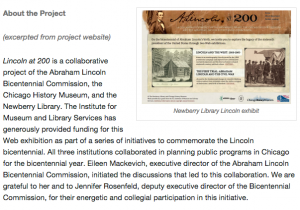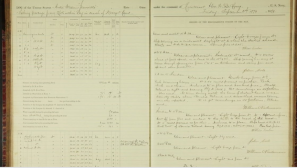 The new layout for the Sample DH is very easy to navigate. It clearly shows the seven categories: Archive, Visualization, Mapping, Digital Edition, Network Analysis, Textual Analysis, and Audio Analysis. It is very easy to find what you are looking for. Under the Archive section it is simple to navigate Old Weather, Lincoln at 200 and Database of Indigenous Peoples in North America. There is a little summary given for each of the three sites to peak your interest.
The new layout for the Sample DH is very easy to navigate. It clearly shows the seven categories: Archive, Visualization, Mapping, Digital Edition, Network Analysis, Textual Analysis, and Audio Analysis. It is very easy to find what you are looking for. Under the Archive section it is simple to navigate Old Weather, Lincoln at 200 and Database of Indigenous Peoples in North America. There is a little summary given for each of the three sites to peak your interest.

I thought that Old Weather sounded pretty fascinating because it was about old ship’s logs, and you could read some of them. The website is fairly easy to navigate and understand, but it does ask you to log in to view the archives so I was not able to see them.
There are many advantages to creating digital artifacts from archival documents. First is the accessibility it enables. With artifacts online, anybody with Internet connection can retrieve information on the archives, not only the specialists that are granted access. They are also fast and normally very easy to navigate. Also, this new technology even allows the specialists to read more of the documents than they could have before. This is because some of the documents are illegible and too fragile to try and flatten out to ready. So with technology, even the oldest and most delicate artifacts are available for the public to view.
However there are also some disadvantages to digital artifacts. You do not have the document physically sitting in front of you. Viewing it online is not the same experience as being able to pick up the artifact. And although most of the time transcribing the artifacts makes it easier to read, sometimes doing so could affect some of the writing and make it more illegible than before.
As I build my digital humanities project, there will be many challenges that I will have to face. Transcribing will definitely be a struggle as well as working with the website for the first time. I also know that I will struggle when trying to organize my words and images clearly.


